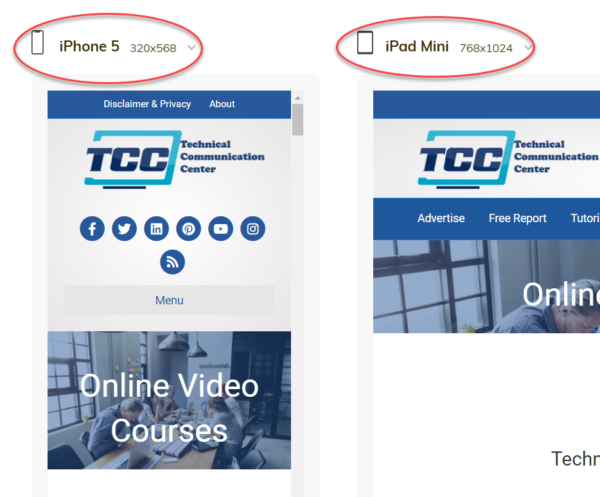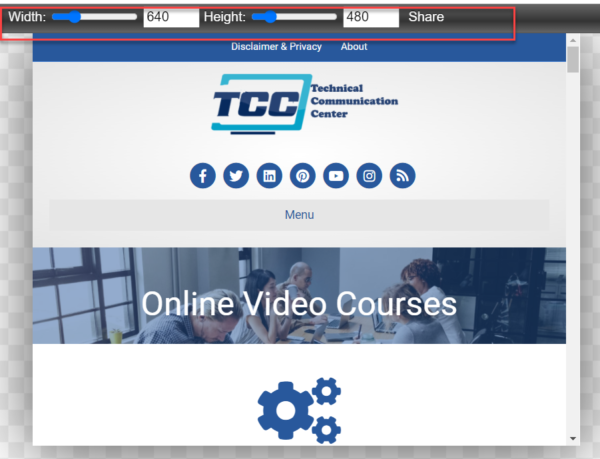
UX Copywriting Principles

What is UX Copywriting?
UX copywriting principles should be followed to create a pleasant, efficient, and productive user experience.
UX is an acronym that stands for “User Experience.”
User experience copywriting is a creative method of communicating with users in a way that aligns with the UX design process. Its subject matter is mostly about writing for digital platforms and gadgets where the reader’s attention span is short, and the writing space is at a premium. The UX writer needs to express what the reader should do or know in as few words as possible and do so clearly and correctly. That’s the challenge of a UX copywriter.
The main challenge is to be brief without creating any unnecessary questions or doubts in the reader’s mind.
For example, if the text of a web button reads “Actuate” instead of “Click” or “Press,” that may create unnecessary questions in the reader’s mind and delay correct action. To make sure all the terms and labels are clear and unambiguous is the job of a UX copywriter.
That is the very first UX copywriting principle: “Be brief but clear.”
What is copywriting?
Copywriting, also known as copy-writing or copy, is an advertising and marketing term for producing written material designed to sell goods or services by persuading the reader. In marketing one can define copywriting as a “strategic communication process that uses words and language to influence the perceptions, attitudes, or behavior of targeted audiences”.
1. Copywriting is a creative method of communicating with users in a way that aligns with the UX design process.
2. Copywriting is a “strategic communication process that uses words and language to influence the perceptions, attitudes, or behavior of targeted audiences.”
3. Copywriters are responsible for writing copy for all media channels – print ads, radio, television commercials, web banners, and landing pages.
4. Copywriters often work in tandem with designers on projects to ensure their content matches what’s being designed visually.
5. Copywriters need to know how people think about products before they’re sold so they can create messaging that resonates well with them.

Oladimeji Ajegbile of Pexels
Four Core UX Copywriting Principles
When it comes to UX copywriting there are four core principles copywriters and UX designers should be aware of:
1. Empathy for your user.
2. Using copywriting to encourage a better experience.
3. Copywriter as a storyteller – framing copy around emotional triggers.
4. Copywriter as a translator – translating features into benefits for users.
Empathy for Your User
Empathy is the ability and skill to share other people’s feelings or experiences. It allows copywriters to think about how people respond to their copy.
UX copywriting should be written from an empathic point of view because – as the saying goes “people buy emotionally, justify with logic.” If you can put yourself in your users’ shoes, copywriting will be more effective.
Empathy for your user can be shown through copywriting techniques like first-person point of view or using copy that lets the user take action. It’s also important to remember that copy should motivate people to act not just describe what they do.
Using UX Copywriting Principles to Encourage a Better Experience
While copywriting can be used to sell products, copywriters should also use their skills to improve the user experience. Copy is one of the most effective ways to communicate with users so copy can be used to guide them easily through an app, digital gadget, or website.
The UX copywriter’s job is not just to sell like crazy, but also to help users complete goals by offering them copy that provides call to action and copy that helps people think about what goes on behind the scenes and easily understand the consequences of their actions.
For example, when users click a text button that is labeled “Copy,” they should be clear in their minds whether the text is copied to the clipboard or not.
Another example:
When at the checkout page of an eCommerce site the transaction cannot be completed AFTER the user enters credit card details, the interface should display an explanatory feedback message making it clear whether the credit card is charged or not. Otherwise, that would lead to a bad user experience since the user would have no way of knowing whether her credit card was charged or not.
Eliminating such ambiguities is also a core principle of UX copywriting since it creates happy readers, visitors, and customers.
Copywriter as Storyteller – Framing Copy Around Emotional Triggers
UX copywriters should also focus on catalyzing emotions in their copy because copy can be an excellent way of building brand awareness. Copywriting can be used to get your users excited about your product by telling stories. Emotional copywriting is copy that gets someone excited about what you offer .
As copywriters, UX designers can use copywriting techniques like the “hero’s journey” or creating copy that inspires people to take action after thinking of themselves as part of something greater than themselves. UX copywriters should consider how copy can be used to get users excited about copy, apps or products that they might not otherwise want to use.
Copywriter as Translator – Translating Features into Benefits for Users
Designers work hard to create beautiful apps, gadgets, and websites but they need copywriters who speak the language of their target audience. UX copywriters make copywriting part of their job because you can use copy to explain what a product does, what its benefits are, and the copy can also be the thing that gets the user excited about your product.
Taking a feature and translating it into something your users will recognize as useful is a translation copywriter should use in creating copy for features they’re designing. UX copywriters are not only copywriters but also UX Designers because they understand that users will experience apps or websites in a different way. Copy is one of the most important ways to convey this message.

What are Some Other UX Writing Principles?
UX Copywriting Principles: Clarity
UX writers must always follow the copywriting principle of clarity. To achieve this, copywriters need to first understand the problem they are trying to solve for users and copywriters must focus on how copy impacts user behavior.
You can write good UX copy by writing concise sentences, paragraphs with no more than five sentences each, copy that uses bullets to break copy up into small chunks the user can easily digest and copy in list form where copy is easy to scan.
Writing copy that matches this principle may be difficult at first, but copywriters will get better and more comfortable with it as they practice and gain experience.
UX Copywriting Principles: Simplicity
This principle is almost the same as “brevity.” If one word expresses the same thing, a UX copywriter should not use two. If two is okay, then one should not use three words, etc.
To achieve simplicity, copywriters need to understand how copy impacts users’ cognitive load and avoid overwhelming the users with too much copy. Simple copy tends to use fewer words and copywriters need to prioritize copy based on what is most important. Simple copy is brief, concise, and clear copy that does not overwhelm the user.
UX Copywriting Principles: Consistency
To achieve consistency, UX copywriters need to understand how copy impacts users’ cognitive load and copywriters need to ensure that copy is consistent across all mediums. Consistent copy is clear copy that does not confuse the user about what action to take next.
If for example, in an airline reservation site, the label for the Name field on page one is “First Name,” do not label it as “Name Given at Birth” or “Official Name on ID” on another page. That would only lead to confusion and needless errors.
UX copywriters should also use a consistent style guide and use the terms, labels, and nouns consistently.
Another way to be consistent is to stay away from adverbs since most of the time an adverb’s meaning will change from person to person, leading to a varied and inconsistent user experience.
UX Copywriting Principles: Familiarity
The copywriting principle of familiarity should always be followed by UX writers. To achieve familiarity copywriters need to understand how copy impacts users’ cognitive load and copy needs to be familiar to the user. Familiar copy is considered copy that uses common language the user understands and copy should always answer the question of what to do next and where to go next.

UX Copywriting Principles: Utility
To achieve copy that is useful, copywriters need to understand how copy impacts users’ cognitive load and copy needs to provide the user with what they are looking for. Useful copy is copy that answers the question of what to do next and copy should be relevant to what the user is looking for.
UX Copywriting Principles: Visualization
To write copy that involves visualization copywriters need to understand that copy should be vivid, descriptive and fun. Vivid copy is copy that uses words the user can picture in their mind’s eye and copy emphasizes what users see instead of focusing on what they think it might look like.
YOu can achieve visualization in copywriting by using short sentences with clearly defined action verbs, copy that uses all five senses to help the user visualize copy content and copy using flowcharts, diagrams or other graphic ideas.
Use Numbers, Symbols, Abbreviations
Use numbers, symbols, and abbreviations instead of their noun equivalents since it’s easier to read and they take less space on the screen or monitor.
For example, instead of writing “eighty-nine dollars” write “$89”. Instead of “one hundred forty-four feet” write “144 ft”.
Use “You” – Always a Winner
After “Free,” “You” is the other magic word in copywriting. Use it frequently in your UX copy since people love it when you address them directly. You can’t go wrong.
Don’t Forget the User Benefits
One mistake copywriters of all types make frequently is to forget translating features into benefits. UX copywriters face the same risk when they are writing copy for a smartphone, iPad, or software app.
Talking nonstop about the features of a product or service is talking nonstop about you, the product or service owner, and not the user of that product or service.
Benefits, on the other hand, explain how the features will make life easier, more productive, or more pleasant for the user. Thus you should never forget to mention the benefit of each feature when you are writing UX copy.
For example, the “About this product (or item)” section of the items Amazon sells is a good example of how you can link benefits with features.
Here is an example:

If Amazon stopped there, we would not know why we should pay for these technical features. But then, down below on the same page, we read what such features would mean for us:

Now we realize how this thermometer can make our life easier – it is Celsius & Fahrenheit Switchable, easy to hold, has a memory mode, and works with batteries.

Use the Present Tense
In your UX copywriting always use the present tense, not the future tense as some copywriters are inclined to do.
Why? Because the users use software or gadgets always in the present tense, not in the future. Thus, they want to read or hear what the system or the software is doing NOW, not what it will do in the future.
For example, instead of saying “When you click this the PDF guide will open in another tab” say “Click this to open the PDF guide in another tab”.
Instead of “If the pressure is too high, the system will flash a red light” try “A red light flashes when the pressure is too high”.
Using the right tense consistently is important.
Pay Attention to Local Usage
For example, in the United States, a period is used for the “decimal point” and a comma separates groups of three whole numbers. But some other countries use a comma for a “decimal point.” You have to be careful about that since it could lead to very costly misunderstandings.
For example “1,500” in the United States is fifteen hundred but one-and-half (followed by two decimal zeroes) in Turkey and other European countries.
You should be equally cautious when writing dates in UX copywriting.
“6/12/2021” reads as “12th of June” in the United States (which uses the mm/dd/yyyy date format) but “6th of December” in Turkey and some other European countries (which uses the dd/mm/yyy date format). You don’t want the user miss an important date just because you’ve used the American convention instead of a European one.
Reasons why you must be careful when writing for an international audience.
Screen-Test Your Writing on a Simulator
Lastly, screen-test your UX copywriting on desktop and mobile simulators to make sure it displays correctly on all kinds of mobile and non-mobile platforms. Here is an example from Bluetree.io :

Here is another one with width and length controls from http://www.responsivepx.com/

Conclusion
UX copywriting principles are simple but important. There are general strategic principles like establishing empathy with the reader and stressing the benefits of a system or gadget. There are also tactical principles like using “you” in the copy, writing briefly and by using the five senses, or paying attention to local usage.
Applying all of these principles successfully takes practice and time. But when applied properly, it helps the users find what they want right away, act with confidence, creating a better user experience (UX). It’s a win-win proposition that helps create a better and more efficient world for the product/service owners and users alike.
Resources Related to UX Copywriting
Looking for a job as a copywriter? Click here
